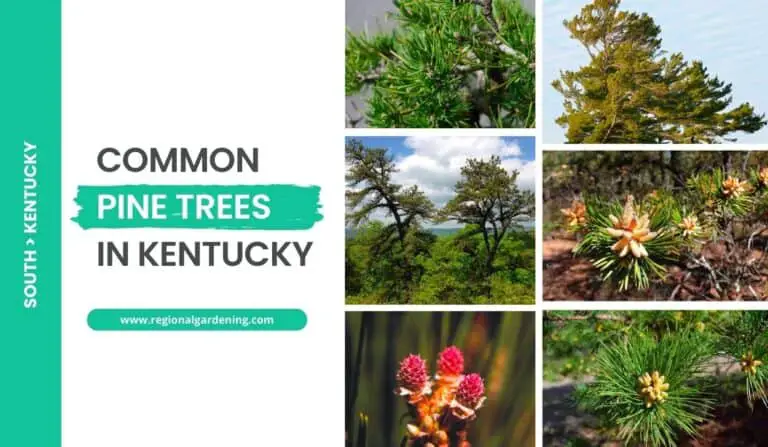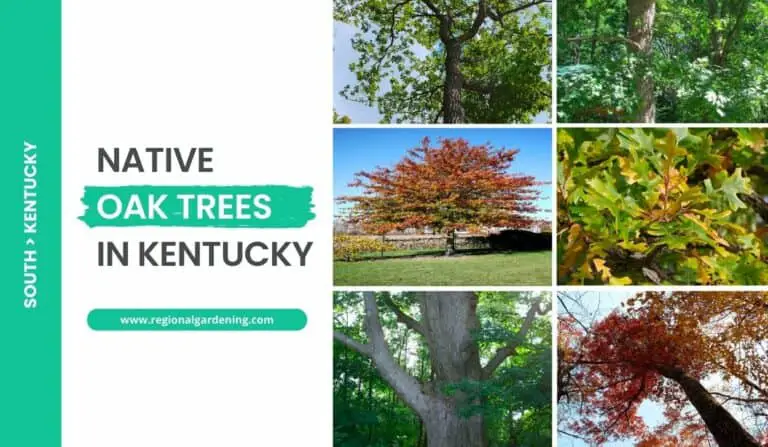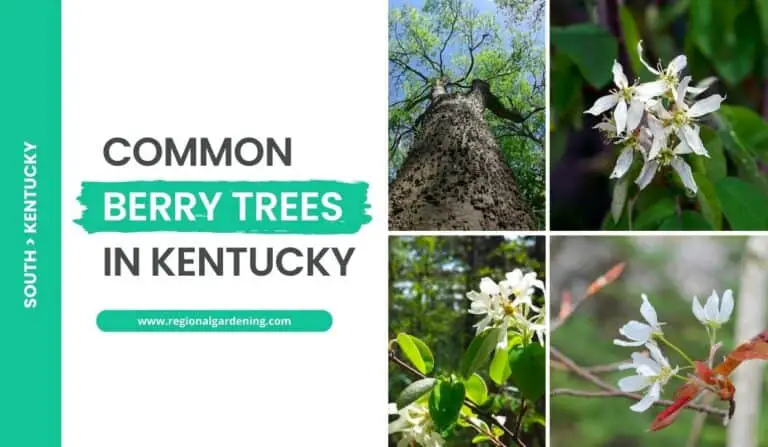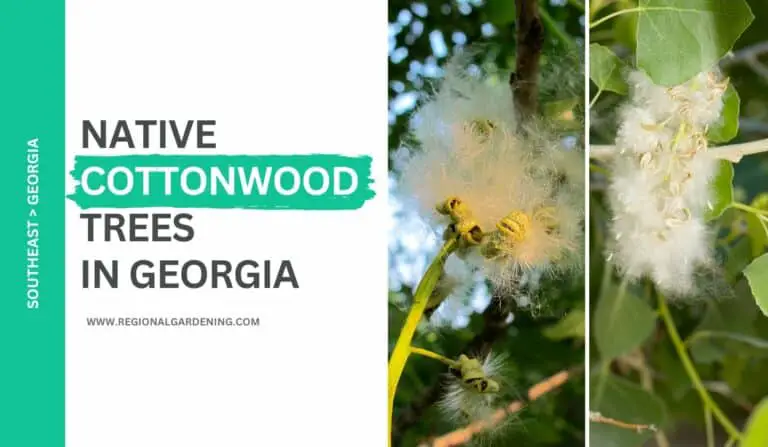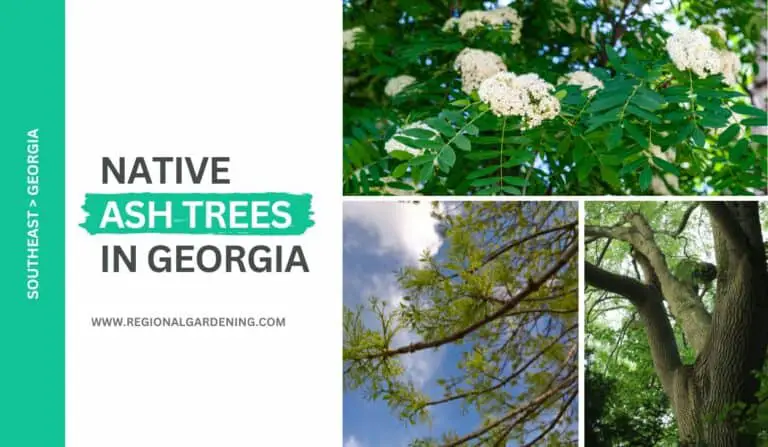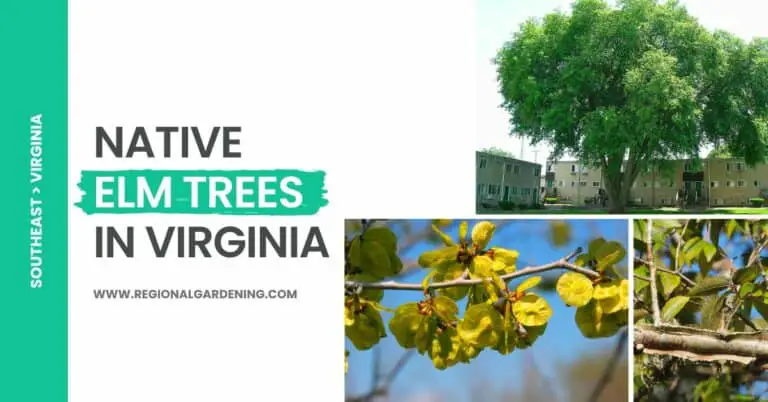3 Common Birch Trees In Kentucky (Photos & Identification)
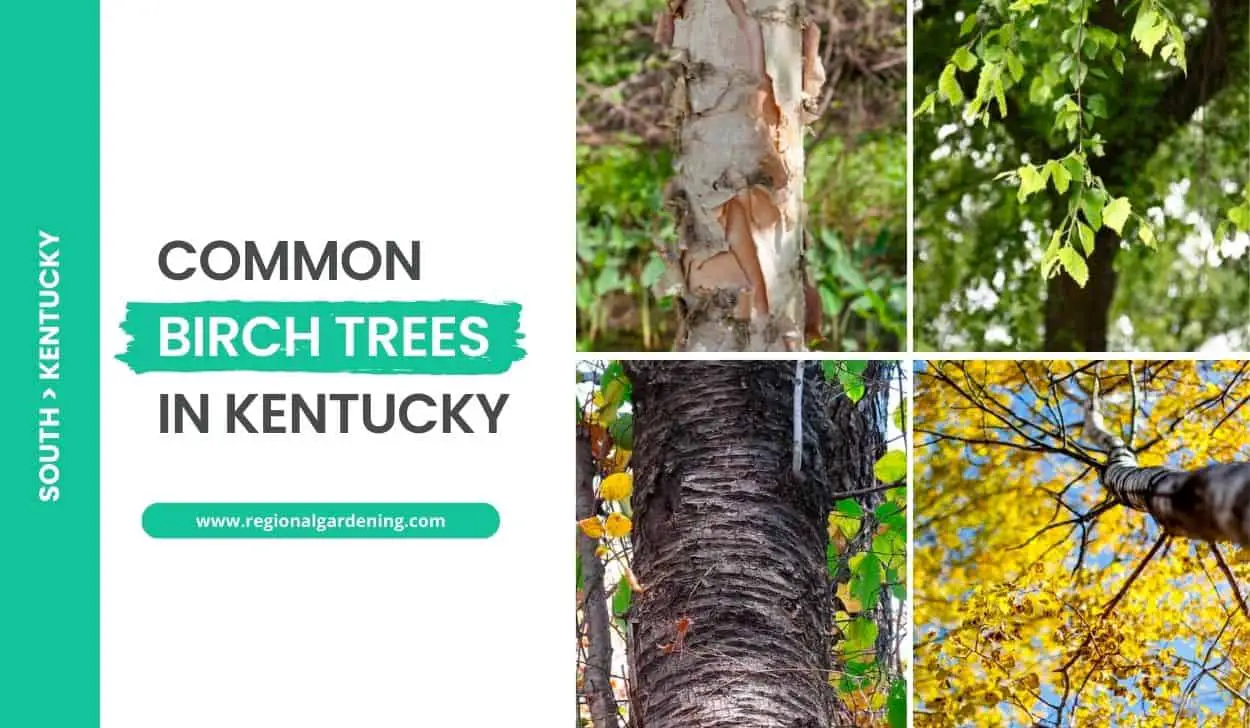
If you enjoy being outside, you have probably spent some time exploring the Kentucky wilderness. And if so, you have undoubtedly come across some of the most notable trees in the state, the birches.
These trees captivate with their finely textured leaves, slender stems, and striking white bark that appears to radiate sunlight. However, did you know that Kentucky is home to a variety of birch tree species?
This piece will examine three of the most common birch trees in Kentucky and explore the unique qualities of each tree.
So, let’s dive deeper into the world of birch trees in Kentucky.
1. River Birch

- Scientific Name: Betula nigra
- Common Name(s): River Birch
- Mature Height: 40 to 70 feet tall, can reach 90 feet
- Native Region: Massachusetts to Florida, west to Minnesota, Kansas, and Eastern Texas
- Flowers: Male flowers are 2- to 3-inch-long, slender, dark brown catkins; Female flowers are 1/3-inch-long catkins with bright green scales.
- Fruit: Small nutlet in a 1- to 1½-inch-long pendulous catkin, ripening in spring.
- Uses: Screen or shade tree, as a street tree with irrigation. River birch wood is hard, strong, and knotty, historically used for ox yokes, wooden shoes, and furniture.
River birch (Betula nigra) is the only semi-aquatic tree in the Betulaceae family and is found throughout the United States, particularly in the southern United States from Florida to eastern Texas. It is well-known for its cinnamon-colored, peeling bark.
This variety of birch requires moist, fertile soil with a pH of 6.5 or below and is hardy to Zone 4. When young, it has a pyramidal growth habit, but when mature, it becomes oval with an uneven crown, reaching a height of 40 to 70 feet, though it can grow up to 90 feet. The growth rate is moderate to rapid.
River birch is known for its distinctive blooms, with male catkins measuring 2 to 3 inches long, thin, and dark brown, and female catkins measuring 1/3 inch long with vivid green scales. The fruit is a little nutlet in the form of a pendulous catkin that ripens in the spring. In the summer, the leaves are alternating, simple, and medium to dark green, becoming yellow in the fall. River birch is less susceptible to pest and disease problems than other birch species.
River birch is native to the coastal plain from Massachusetts to Florida, and west to Minnesota, Kansas, and Eastern Texas. It is commonly found beside large rivers. From the base, multiple branches form, and each trunk leans outward.
River birch is appropriate for Kentucky landscapes because to its resilience to hot weather, particularly in sites with damp soil. Plant in well-draining soil with a preference for full sun but tolerance for part shade. River birch should be pruned in the summer to avoid bleeding.
2. Sweet Birch
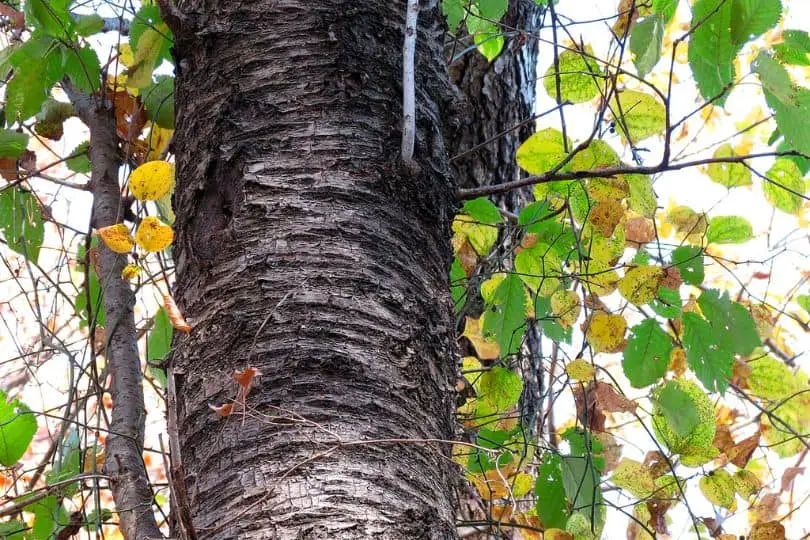
- Scientific Name: Betula lenta
- Common Name(s): Sweet Birch
- Mature Height: 40 to 55 feet tall; 35 to 45 feet wide in landscape settings. In the wild, it may grow to heights of 80 feet.
- Native Region: Southern Maine to Eastern Ohio, south to Kentucky, Alabama, and Georgia.
- Flowers: Monoecious. Pendulous male catkins are 3 to 4 inches long with red-brown scales. Female catkins are 3/4 of an inch long, upright, with light green scales, round tips, and pink styles. Flowers appear before leaves in April.
- Fruit: Winged nutlet in a 3/4- to 1 1/3-inch-long, 3/5-inch-wide strobile.
- Uses: The wood is medium heavy, medium hard, and dark brown. It has been historically used for furniture and has a wintergreen scent in the inner bark, utilized in the production of oil of wintergreen. The sap can be combined with corn and fermented to make beer.
Sweet Birch, scientifically known as Betula lenta, is a deciduous tree recognized for its spectacular yellow fall foliage, which is regarded as the best among cultivated birches in the Midwest. When young, the tree has an erect, pyramidal growth habit, evolving into a rounded form with an uneven crown. The dark lustrous red to practically black bark is smooth or scaly coated, similar to that of cherry trees.
This birch species is native to a wide range of areas, including Southern Maine, Eastern Ohio, and Kentucky, Alabama, and Georgia. It grows well at heights of up to 4,000 feet in the Appalachians. In landscape settings, it grows to a height of 40 to 55 feet and a width of 35 to 45 feet, but it may grow taller in the wild.
Male catkins mature to 3 to 4 inches in spring, with red-brown scales, whereas female catkins are smaller and erect. In April, flowers bloom before the leaves. The fruit is a winged nutlet enclosed by a 3/4- to 1 1/3-inch long strobile.
This birch thrives in deep, fertile, moist, well-drained, somewhat acidic soil, making it ideal for Kentucky settings. It is hardy to USDA Zone 3 but should be avoided in hot, dry conditions. The tree is resistant to the bronze birch borer and has a higher resistance to the gypsy moth than other birch species. Pruning should be avoided in the spring to minimize severe bleeding.
Aside from its visual appeal, sweet birch wood is medium heavy and medium durable, with applications in furniture. Notably, the inner bark emits a strong wintergreen aroma, which has historically been employed in the manufacturing of wintergreen oil. The sap has even found a novel application, combining with corn for beer production. Overall, sweet birch adds attractive and functional value to Kentucky gardens.
3. Yellow Birch
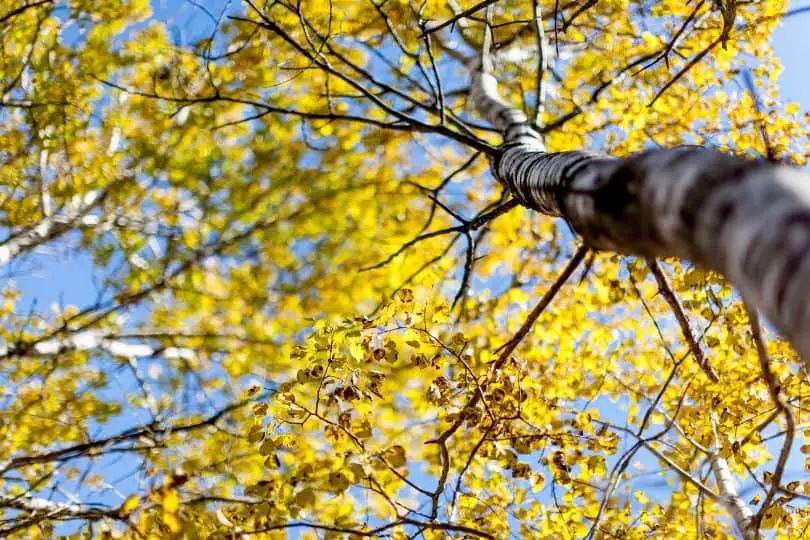
- Scientific Name: Betula alleghaniensis
- Common Name(s): Yellow Birch
- Mature Height: 60 to 75 feet tall; 25 to 35 feet wide.
- Native Region: Eastern North America, ranging from Newfoundland to Minnesota, and south to Virginia and West Virginia.
- Flowers: Monoecious. Male catkins are 2 to 4 inches long, while female catkins are 1/2 to 1 1/4 inches long. Flowers appear in spring.
- Fruit: Cone-like strobiles, 1 to 1.5 inches long, with winged seeds.
- Uses: The wood is valuable for furniture and flooring. The sap can be tapped for birch syrup.
Yellow Birch, formally known as Betula alleghaniensis, is a large deciduous tree that can grow to be 60 to 75 feet tall and 25 to 35 feet wide. This Eastern North American native ranges from Newfoundland to Minnesota, and south to Virginia and West Virginia.
The tree is monoecious, with male catkins measuring 2 to 4 inches in length and female catkins measuring 1/2 to 1 1/4 inches. The arrival of these blossoms signifies the arrival of spring. The fruit is made up of cone-like strobiles that are 1 to 1.5 inches long and contain winged seeds.
Yellow Birch is distinguished by its yellow to golden-brown bark, which peels in thin, papery flakes. This, combined with its graceful shape, gives ornamental value to landscapes. When crushed, the bark has a wintergreen scent that distinguishes it from other birch species.
Yellow Birch thrives in damp, well-drained soils, which are commonly found in chilly, mountainous areas. This makes it ideal for Kentucky gardens with suitable soil conditions. The tree is robust and versatile, and it provides shade as well as ornamental appeal.
Yellow Birch has important timber in addition to its aesthetic contributions. The timber is noted for its strength and lovely grain and is utilized in the manufacture of furniture and flooring. Furthermore, like other birch species, the sap of Yellow Birch can be tapped to generate birch syrup, providing a distinct culinary application.
Yellow Birch care entails maintaining optimum moisture levels, especially in well-drained soil. While most trees are resistant to pests and diseases, paying attention to soil conditions improves the tree’s overall health.
Common Birch Trees In Kentucky – Frequently Asked Questions (FAQs)
Let’s walk you through some of the most frequently asked questions related to common birch trees in Kentucky.
Are there birch trees in Kentucky?
Yes, there are birch trees in Kentucky. The diverse ecosystem of the state supports the growth of a wide range of vegetation, including several species of birch trees such as yellow birch, river birch, and sweet birch.
These trees are commonly found in Kentucky’s cooler regions, particularly in areas with moist, well-drained soil. Birch trees are distinguished by their distinctive bark, which can be white, yellow, or silver. They add beauty to the landscape while also playing an important role in the local ecology by providing wildlife with shelter and food.
What should I consider before growing birch trees in Kentucky backyard?
There are several factors to consider before planting birch trees in your Kentucky backyard. First, learn about birch tree growth requirements, such as sunlight, soil type, and pH level. Birch trees prefer cooler climates and will suffer in Kentucky’s hot, dry summers. They prefer acidic, well-drained soil and plenty of sunlight.
Second, consider how much space you have in your backyard because these trees can grow to be quite large and may interfere with power lines or other structures if planted too close together. Birch trees are also susceptible to certain diseases and pests, so learn about proper maintenance and pest management strategies.
Finally, see if your local rules or homeowners association guidelines allow you to plant such trees in your backyard.
What are the common uses of birch trees in Kentucky?
Birch trees in Kentucky are widely used for a variety of purposes. They are primarily grown to add natural beauty and shade to parks, streets, and landscapes. Birch bark, in particular, has a distinct visual appeal due to its silvery, peeling texture.
Birch wood is also widely used in furniture manufacturing due to its light color and fine grain. It is also used in the production of plywood, paneling, cabinets, and veneer. Birch trees are excellent for soil stabilization because of their dense root systems, which prevent soil erosion.
They also provide habitat and food to wildlife such as birds and squirrels. Finally, birch sap is frequently collected and processed into syrup, similar to maple syrup.
Similar Articles
- Maple Trees In Kentucky
- Dogwood Trees In Kentucky
- Berry Trees In Kentucky
- Oak Trees In Kentucky
- Hickory Trees In Kentucky
- Cypress Trees In Kentucky
- Ash Trees In Kentucky
- Elm Trees In Kentucky
- Pine Trees In Kentucky
- Magnolia Trees In Kentucky
- Locust Trees In Kentucky
- Cedar Trees In Kentucky
Sources
The Regional Gardening team makes sure that the information in our articles is accurate by only using sources that are known to be trustworthy. Some of these sources are peer-reviewed journals from government agencies, well-known universities, and scientific research organizations.
- Common Kentucky Trees, Department of Forestry & Natural Sources, University of Kentucky
- Native Trees Of Kentucky, Department of Horticulture, University of Kentucky.
- Trees & Shrubs of Kentucky, Book By Mary E. Wharton and Roger W. Barbour, University Press Of Kentucky


